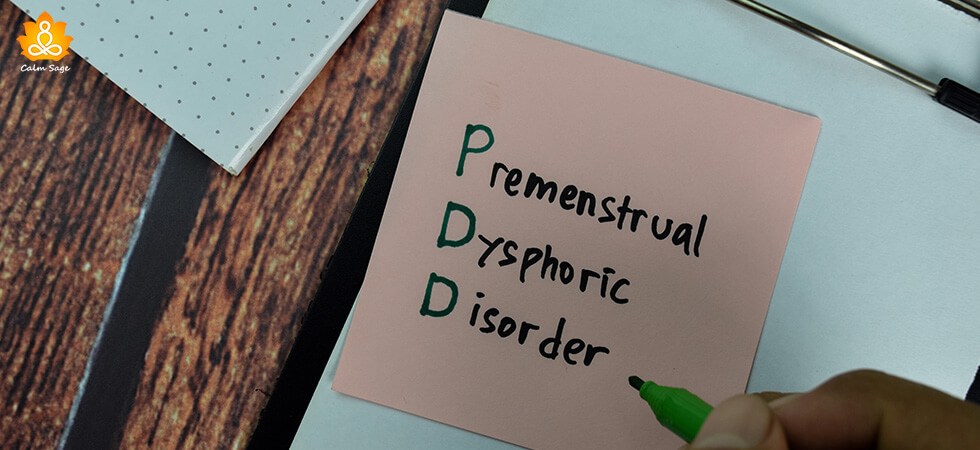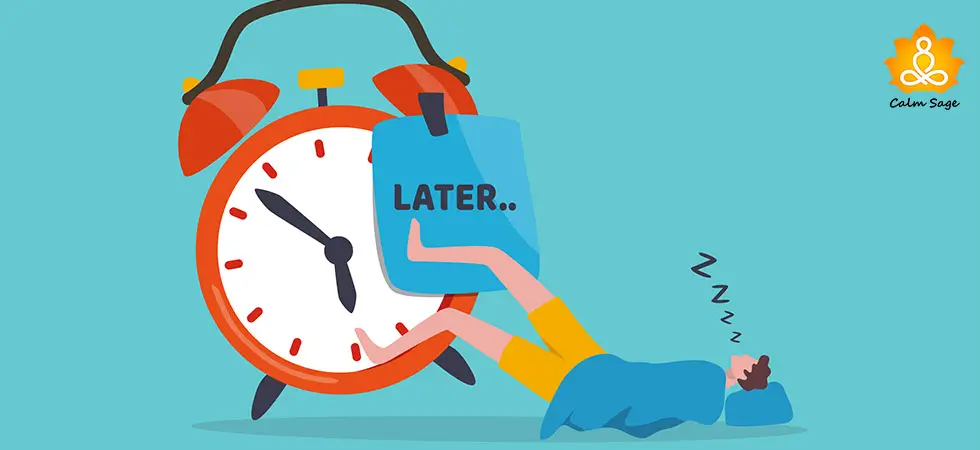A Comprehensive Guide To Premenstrual Dysphoric Disorder

Premenstrual Dysphoric Disorder or PMDD is a health condition in women that is somewhat similar to premenstrual syndrome or PMS but it can cause more severe problems than PMS. PMDD can often lead a woman to develop depression, irritability, and anxiety a week or two before their period date.
You might be thinking; “Then how is PMS different from this disorder?”. During PMS, it is common for women to have food cravings, stomach cramps, develop tenderness in breasts, mood swings, and fatigue but PMDD is different.
Premenstrual dysphoric can cause a woman to develop severe emotional and physical symptoms that can interfere with their daily life, work, social life, and even relationships.
Symptoms Of PMDD:
While the symptoms of PMDD are similar to that of PMS, they can be severe and can cause interference in your day-to-day activities. Symptoms of premenstrual dysphoria can be:
- Severe mood swings
- Depression and feelings of hopelessness
- Extreme feelings of anger
- Irritability and anxiety
- Anhedonia i.e., no interest in activities you normally enjoy
- Trouble concentrating
- Tiredness and fatigue
- Changes in appetite
- Changes in sleep patterns
- Muscle cramps and bloating
- Tender breasts
- Headaches
- Hot flashes
- Feeling out of control
While it is unclear what causes PMDD, it is safe to say that it can be, however, brought on by hormonal changes throughout the menstrual cycle a woman goes through. Lack or deficiency of serotonin may also cause the symptoms of PMDD as women are more sensitive to hormonal changes.
PMDD Diagnosis
There are no concrete tests that can be used to diagnose the symptoms of PMDD but closely monitoring these symptoms can help you determine if you have or are prone to developing PMDD:
- Chronic fatigue
- Fibromyalgia
- Hormonal imbalances
- Major depression
- Migraine
- Menopause
- Panic attacks
Maintain a journal and keep track of your symptoms as they appear. This journal can be presented to a doctor to help them understand more about your symptoms. You can also use apps like Period Tracker to help you keep a track of your symptoms on the go.
This tracking activity can help you see the changes in your cycle and symptoms. With this, you can see how these changes are affecting your daily life. If you’ve previously been diagnosed with a mental health condition, then make sure to relay that information to your physician to help them make an accurate diagnosis.
Pre-existing or underlying mental health disorders can make your symptoms worse.
Women a risk of developing PMDD are:
- Women in their late 20s-early 30s
- Women with a personal history of anxiety or mood disorders
- Women with a family history of premenstrual dysphoria
- Women with chronic stress
Treatment For PMDD

There are no single treatment options to help with the symptoms of PMDD but with the help of lifestyle changes, therapy, and medications, it can be manageable.
1. Lifestyle Changes
By making some adjustments to your daily lifestyle, PMDD symptoms can be managed. You can try:
- Exercising regularly: An intense workout isn’t necessary. Quick and simple exercises like taking a 30-minute walk every day can help.
- Stress management: Avoiding stress isn’t feasible but practicing stress management techniques like deep breathing, relaxation exercises, meditation, yoga, or any other technique of your choice can help.
- Dietary changes: Cutting back on foods and beverages that are high in sodium, caffeine, and alcohol can be beneficial.
- Eat healthily: Foods with fish, carbohydrates, and whole grains can help you increase serotonin in your body. Lack or deficiency of serotonin is one of the main causes of PMDD.
2. Therapy
While there is no particular therapy to help with the symptoms of PMDD, you can, however, reach out to a therapist that specializes in cognitive-behavioral therapy (CBT). This therapy can help you change negative and unhealthy behavior and thinking patterns and can help provide healthy coping skills to deal with negative situations and mood swings when they arise.
3. Medications
Certain medications that can help to regulate the symptoms of PMDD are:
- Antidepressants or Selective Serotonin Reuptake Inhibitors (SSRIs)
- Birth control pills
- Over-the-counter medication such as aspirin or ibuprofen
On A Personal Note

Living with PMS can be difficult but living with PMDD can be even more difficult as it can severely interfere with your daily routine. This disorder is something that will eventually resolve once you reach menopause or you stop menstruating. The symptoms of PMDD may evolve or worsen over time but with simple self-help tips, it can be manageable.
Maintaining and keeping a track of your periods and symptoms can be a way to help you get a better understanding of your condition. There may come a time where you might want to try different treatments to find the one best for you and that’s okay and pretty normal.
It can be a frustrating process but don’t hesitate to reach out if you feel your symptoms worsening. Whether to talk about your PMS or your other emotional stress, connecting with a community can help.
You are strong, you are enough, you are a hero!




















